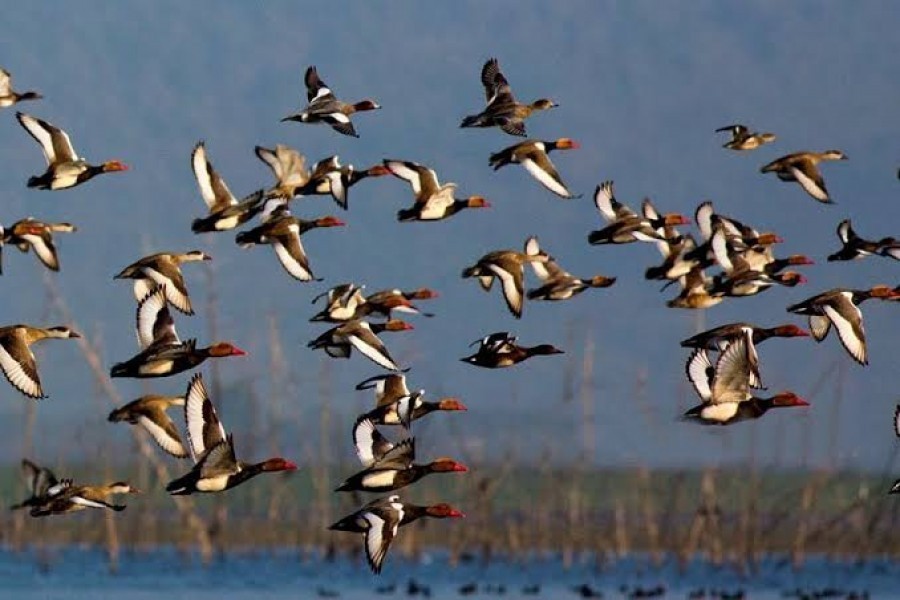The arrest of four bird poachers with 32 indigenous birds they killed in a tea garden during an anti-poaching drive under an assistant range officer of the Satchhari Wildlife Range in Chunarughat, Habiganj brings to the fore an issue hardly covered by the media. Admittedly, the focus is entirely on the migratory birds. But little attention, except some isolated initiatives taken by some young bird lovers or their groups, is given for conservation of the resident birds, most of which prefer to live alone, in pairs or in small flocks but hardly in large flocks like migratory birds. Weavers are the only exception with huge flocks; next are shaliks (local mynas) and parrots which can be called socialising birds. When the go-alone local birds are netted, shot or otherwise hunted, the murderous act draws little attention. But one does not have to be an ornithologist to miss the chirping and sweet songs of a motley band of indigenous birds of yester years even in a verdant rural setting.
All because the resident birds have been killed indiscriminately and their habitats destroyed with increasing human encroachment. A joint study conducted by the Department of Forest (DoF) and the International Union for Conservation of Nature (IUCN) between 2013 and 2015 found that 19 species of such birds have become extinct. Of the total 1,691 species of mammals, birds, amphibians, crustaceans, fish and butterflies placed in the Red List-2015 by the IUCN, 390 were categorised as threatened ---56 of those critically. As many as 68 species of birds are facing conservation threats. The number of bird species already extinct and facing extinction is a testament to the nation's gross mindless treatment to the avian diversity. And avian diversity is a sine qua non for maintaining bio-diversity of a land area.
Not many people are perhaps aware that even weavers and sparrows have long been added to dishes on the dining table, so have been jackal and civet meat. Rumours have it that meat of these animals has medicinal quality. No wonder that when the top hunter, man that is, targets an animal or a bird, its existence becomes precarious. Thus animals and birds are dwindling in their rural habitats. Even in forests they are hunted down clandestinely. A case in point is that of Chunarughat. What is so shocking and despicable is that of the 32 birds the hunters killed, there were even the country's national bird magpie robin, local myna and the beautiful greater racket-tailed drongo (veem raj). Why did the poachers kill those birds? Have people started eating their flesh too?
If the answer is in the positive, it is simply mind-boggling. There is a limit to omnivorousness. The suspicion that the origin of coronavirus had been the animal market of Wuhan has neither been dismissed nor been proved beyond doubt. But there is little doubt that animal meat is a potential source of diseases. Besides, feathered creatures are unique living beings which give humankind immeasurable joy as well as do great service by eating harmful insects that damage crops. The urgency of protecting the resident varieties of them should be accorded due recognition.


